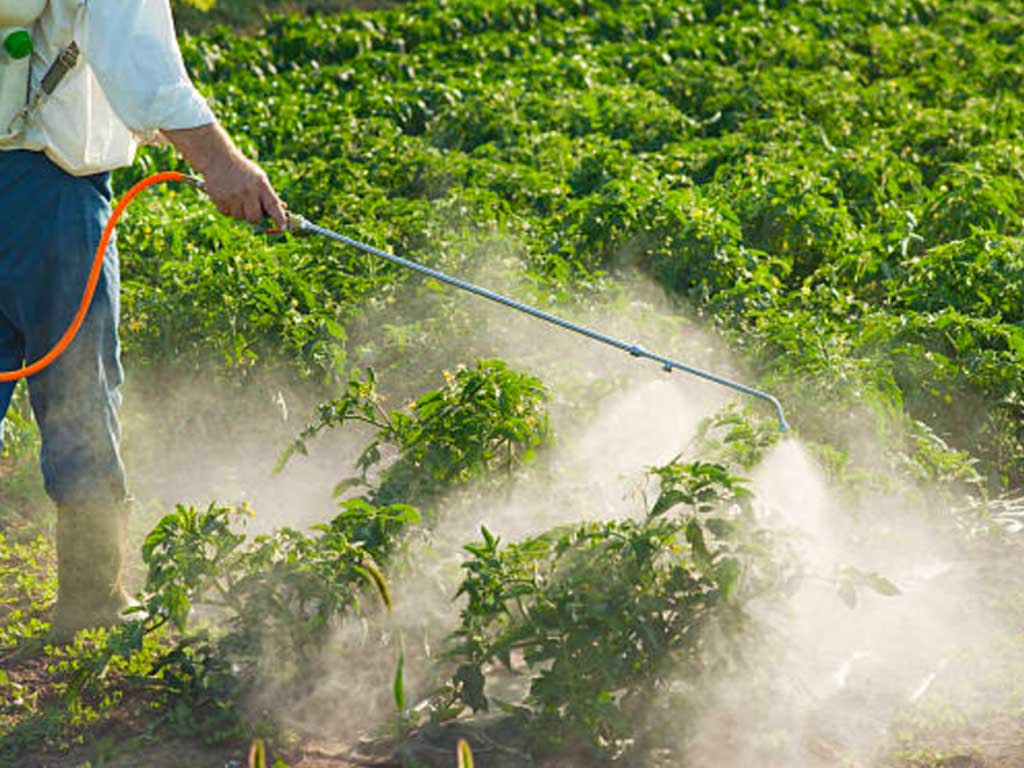
Pesticides can move in the air, in water, and through the soil resulting in environmental damage and exposure to nontarget plants and animals. Applicators are responsible for damages resulting from off‐target pesticide movement.
Pesticide Drift Pesticide drift is the movement of pesticides through the air away from the intended target site. When pesticide drift occurs, it can damage crops and expose humans, domestic animals and wildlife. Drift can contaminate soil and water.
Pesticide movement in water usually is the result of either runoff from the application site to an unintended site or water body or leaching from the soil by water, moving outward and/or downward in the soil. This can cause unintended harm to plants or animals or contaminate surface water or groundwater.
Movement on or in objects includes such things as: • Pesticide residues on equipment or clothing used by pesticide applicators. These residues can affect unintended plants, wildlife, livestock, pets and people.
• Pesticides that have adsorbed on soil particles that are subsequently moved to an unintended site by wind or water erosion.
• Pesticide residues on plants that are removed from site. This may be as plant parts, feed, seed or other plant‐based products.
• Pesticide residues on or in animals that are treated by pesticides and moved to a new site. The residues can be in the meat, milk or fiber used by man, on their fur or skin, in their feces or other waste products, etc. Minimizing pesticide movement and subsequent unintended application and damage is part of the pesticide applicator’s job.
Types of Pesticide Drift There are two types of drift: vapor drift (chemical volatility) and particle drift. Vapor drift is the movement of pesticide vapors from the target area, carried by air. Particle drift is the movement of small spray droplets or dust from the target area, carried by air.
Factors Affecting Drift
Many factors influence the amount of particle spray drift. Of primary concern are spray droplet size and wind velocity, as they are the cause of most of the problems associated with spray drift.
Temperature influences the volatility of pesticides. The size of the spray droplets determines how fast the droplets fall and how far the pesticide might drift. Small, lightweight droplets fall more slowly and have more time to drift.
As droplet size increases, the potential for drift decreases. The greater the wind speed during a pesticide application, the greater the risk of pesticide drift. Consider wind direction when planning a pesticide application. Do not apply pesticides when the wind is blowing towards a susceptible crop, water body or other sensitive site.
Winds are generally calmer in early morning or early evening. These are better times of day to apply pesticides. Low relative humidity and/or high temperature increase the evaporation rate of spray droplets. Spray drift is usually greater from aerial applications than from ground applications.
Proper nozzle selection helps maintain uniform application by controlling both the amount of pesticide applied and the size of the pesticide droplets. Spray pressure influences the size of the droplets formed. Increased pressure produces smaller droplets, which are more susceptible to drift.